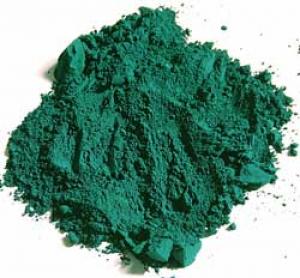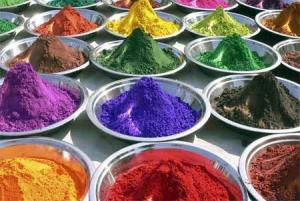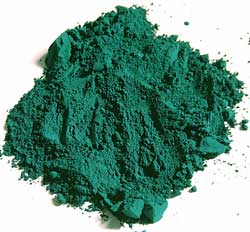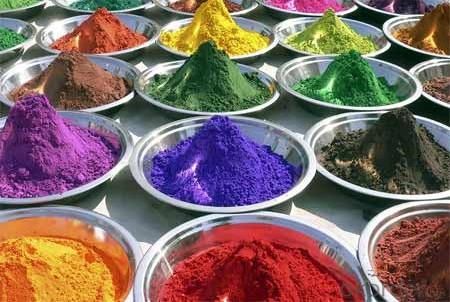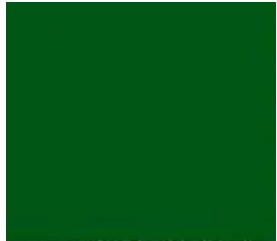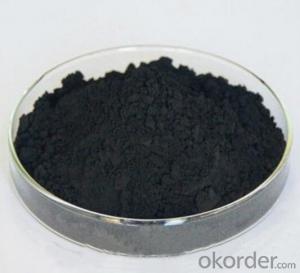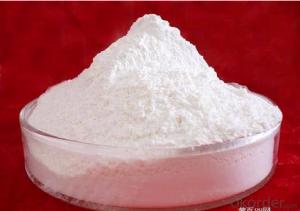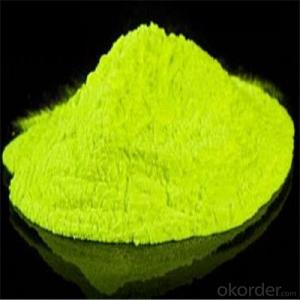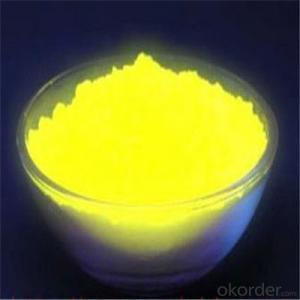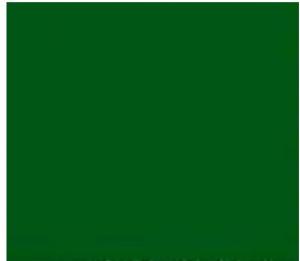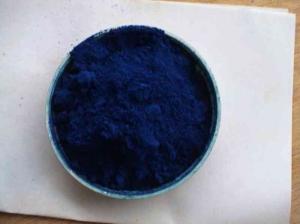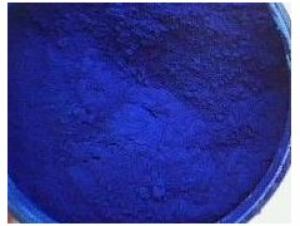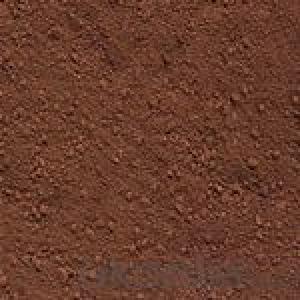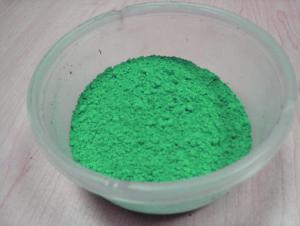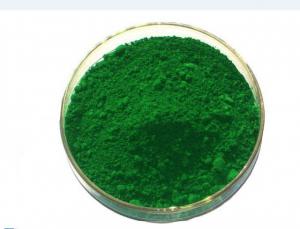Phthalocyanine Green G (PG7)
- Loading Port:
- Shanghai Port
- Payment Terms:
- TT or LC
- Min Order Qty:
- 1 Metric Ton m.t.
- Supply Capability:
- 7,500MT/Year m.t./month
OKorder Service Pledge
OKorder Financial Service
You Might Also Like
Production Details Of Phthalocyanine Green L8710
| |||||
Chemical Structure | CuPc Halide | ||||
Color Index No. | PG 7/74260 | ||||
Application | Paint | ||||
Physical Form | powder | ||||
| |||||
Test Items | Index | Test Method | |||
Relative Tinting Strength | 100 +_5% | DIN55986 | |||
ΔE,ΔL,Δa,Δb | ≤1,+1,+1,+1 |
| |||
| |||||
Items | Index | Test Method | |||
PH | 6.5~8 | DIN ISO 787-9 | |||
Density 20℃ g/cm3 | 2.1 | DIN ISO 787-10 | |||
BET m2/g | 61 | DIN 66131 | |||
Oil absorption g/100g | 32~42 | DIN ISO 787-5 | |||
105℃ Volatile Matter | ≤1.0% | DIN ISO 787-2 | |||
Water Solubles | ≤1.5% | DIN ISO 787-13 | |||
Residue on Sieve 100 mesh | ≤5% | DIN 53195 | |||
| |||||
Solvent Resistance | Index | Test Method | |||
Water | 5 | DIN ISO 105-A03 | |||
White Spirit | 4~5 | DIN ISO 105-A03 | |||
Ethanol | 4~5 | DIN ISO 105-A03 | |||
Acetone | 4~ 5 | DIN ISO 105-A03 | |||
Di methylbenzene | 4~5 | DIN ISO 105-A03 | |||
| |||||
Tolerance | Index | Test Method | |||
Light Fastness | 8 | DIN ISO 105-A03 | |||
Weather Resistance | 5 | DIN ISO 105-A03 | |||
Acid Resistance | 5 | DIN ISO 105-A03 | |||
Alkali Resistance | 5 | DIN ISO 105-A03 | |||
Hot Resistance | 230℃ |
| |||
Packing Details Of Phthalocyanine Green L8710 :
25 kg / bag , 20 MT/ 20 FCL .
Suggest Using Of Phthalocyanine Green L8710 :
1) Printing ink
2) Paint
3) Plastic
4) Rubber
5) Pharmaceuticals
6) Printing colors
7) Highly dispersible
8) High density pigment used for addition of coloration
9) Limited anti-dissolvent and anti-flocculability
10) High temperature resistance and sunshine resistance
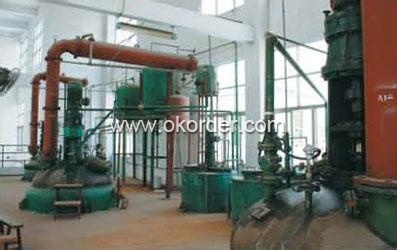
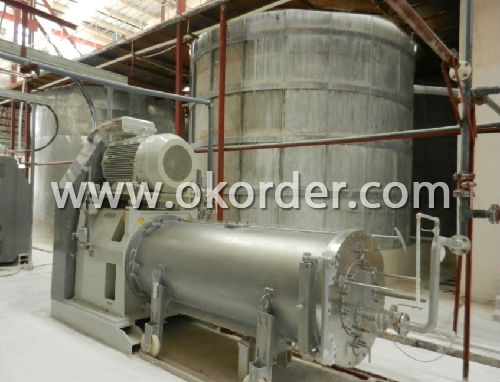

- Q: Are carontenoids and anythocyanin accesory pigments.
- Accessory Pigments
- Q: do all leaves extract contain the same pigments??why?
- Absolutely not. Leaf pigments, just to name a few, may include chlorophyll, carotenes, lutein, anthocyanins. Not only will pigment content vary between plant species, but pigment content will vary in individual plants seasonally.
- Q: What does pigment mean?
- * PIGMENT [uncountable and countable] = a natural substance that makes skin, hair, plants etc a particular colour. ==> Melanin is the dark brown pigment of the hair, skin and eyes. ==> The artist Sandy Lee uses natural pigments in her work. ( Longman Dictionary ) * PIGMENT = the natural colouring matter of animal or plant tissue. ==> Carotenoid pigments are red, orange, or yellow. ( Oxford Dictionary ) * PIGMENT = a substance used for colouring or painting, especially a dry powder, which when mixed with oil, water, or another medium constitutes a paint or ink. ==> All the frescoes are painted with earth pigments ( Oxford Dictionary )
- Q: what is the relationship between chlorophyll a, accessory pigment?
- Sativa- uplifting, high, trippy, baked out of your gourd, ****** up, spacy Indica- passing out, baked, stoned, sleepy, couchlock, retarded, weird dreams
- Q: what are the differences between colorfast and non colorfast pigments?
- I'm sure with enough research you will be able to find these answers and explanations in your text book. Or google them, maybe it will have pics to help describe if your more of a hands on learner. Good Luck.
- Q: Pleaseeeeee answer A.S.A.P Pleaseeee! Are pigments haram?
- Most pigments for dyes and paints come from plants or minerals. What exactly do you need? The second part of your question about haram, needs some explanation, too.
- Q: What pigments take part in photosynthesis?
- The green chlorophyll a & b
- Q: what is the function of pigment molecules in photosynthesis?
- WELL to be exact cuvette 2: to observe the role of photosynthesis with chromatin cuvette 3: to observe the role of photosynthesis with UV rays cuvette 4: to observe the stability of the chloroplasts cuvette 5: to observe the reaction of the H2O synthesis
- Q: What are MAC pigments?
- its proberly a load of bullshit to make ppl to buy it
- Q: What happens to the yellow pigments in a leaf during the summer months?
- Carotenes and xanthophylls are always present in the leaves of plants. During the summer, the abundant chlorophyll masks the presence of the yellows, oranges, and reds that are also present. These other pigments are called accessory pigments and also absorb light energy used in photosynthesis.
Send your message to us
Phthalocyanine Green G (PG7)
- Loading Port:
- Shanghai Port
- Payment Terms:
- TT or LC
- Min Order Qty:
- 1 Metric Ton m.t.
- Supply Capability:
- 7,500MT/Year m.t./month
OKorder Service Pledge
OKorder Financial Service
Similar products
Hot products
Hot Searches
Related keywords
